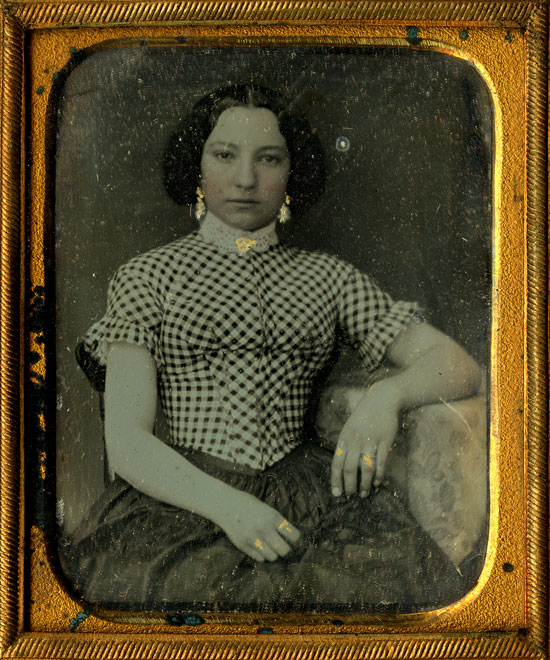Dating Cased Photographs Using Nineteenth Century Ladies’ Journals
Family photographs can be difficult to date, especially the farther back in time you go. Unless an ancestor diligently dated and identified sitters it can be hard to figure out who is the subject of a photograph.
The ability to identify key fashion elements in the subject’s clothing is one of many useful methods available for narrowing in on an accurate date estimate for an early photograph.
Knowing what style of waistline, bodice, neckline, collar, sleeve, accessory, wrap, or headgear was in fashion during a certain period of time can aid a researcher in placing the photograph within a decade, often either the earlier or latter half. This could prove helpful in identifying to which generation the subject of the photograph belongs, thus aiding in placement and identification of early photographic subjects within family trees.
Using early photographs selected from the Historical Society of Pennsylvania’s large collection of cased photographs, along with the aid of primary research on ladies’ fashions from Godey’s Lady’s Books, this exhibit aims to illustrate key examples of mid- to late-nineteenth century fashions used to date our photographs.
Considerations for Dating a Photograph
This image of an unidentified sitter (shown at right) is a difficult one to date.
The skirt-and-waist style came into fashion in the 1860s, along with the short waisted bodice cut with two darts on either side of a front closure. But the pendant earrings were more in style in the latter half of the 1850s. The style of collar, a Jenny Lind, adds to the confusion as it was popular from the late 1840s through the early half of the 1850s.
How Do We Date This Photograph?
Understanding that women reused parts of older dresses for the top and bottom halves of their skirt-and-waist-style outfits might explain the anomaly of the collar. Also, knowing women were encouraged to be frugal by the editors of the fashion magazines they followed so closely will help explain why a woman might retain elements of an older style in her dress. So we take the latest fashion element in the image as the most likely date. Thus, an estimated date of 1860 places this image between 1858 and 1862 when styles were once again in transition.
The author and curator of this exhibit is D'Arcy White, Cased Photographs Specialist and DCA2 Project Photo Conservator at the Historical Society of Pennsylvania. D’Arcy received her Master of Arts in Photographic Preservation and Collection Management in a joint program with Ryerson University in Toronto, Canada, and George Eastman House International Museum of Photography and Film in Rochester, New York. In her capacity as Cased Photographs Specialist, D’Arcy is conducting a survey of HSP’s cased photographs, compiling an item-level inventory, and digitizing the entire collection for inclusion on http://digitallibrary.hsp.org/.
D’Arcy is also Project Photo Conservator, performing treatments such as mending tears, humidifying rolled or folded items, as well as care of cased photographs, including mending damaged cases and cleaning or replacing deteriorating or broken glass.

